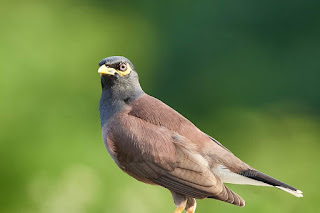Indian Palm Squirrel

Indian Palm Squirrel, also known as three-striped palm squirrel belong to rodent family. These squirrels are closely connected with the trees like the birds, who perch on the trees. Squirrels in general look very cute and are very intelligent. It is a sight to see squirrels running up and down the trunk and branches of the tree and while making a call would move its tail up and down. They eat in a very peculiar way by using their forelegs and sitting on its hind legs, which makes them look super cute when nibbling from their forelegs. They are the most active during summer season. During winters they love cozying up in their nests up in the trees or in the cracks in wall or deserted houses. They are known to make super cozy nests for their young ones. Squirrels are known to take away cotton from some discarded mattress or a pillow, are also known to take away soft pieces of cloth and other fibers from the trees and line their nest up with such soft things making it a cozy nest. As per ...



